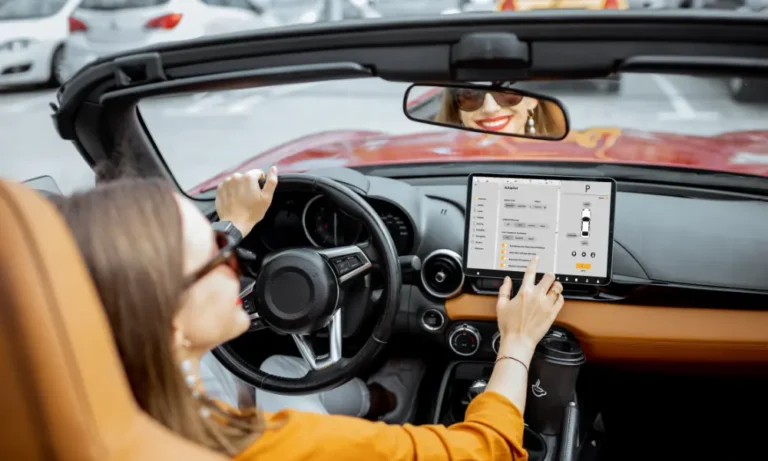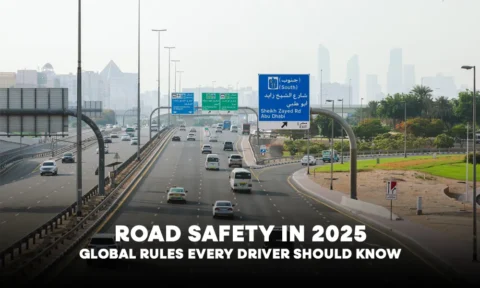When it comes to choosing the right vehicle, safety should always be a top priority. With advancements in automotive technology, modern cars are equipped with a range of safety features that provide a higher level of protection for drivers, passengers, and pedestrians. Whether you’re a daily commuter or an occasional road tripper, understanding the essential safety features in your car can make a significant difference in reducing risks on the road.
Here are the top 10 car safety features for your safer drive
1. Anti-lock Braking System (ABS)
ABS prevents the wheels from locking up during sudden braking, ensuring that the car maintains traction with the road surface. This allows the driver to maintain better control of the vehicle and avoid skidding, especially in wet or icy conditions. ABS is crucial for emergency stops and can significantly reduce braking distances.
2. Electronic Stability Control (ESC)
ESC is a life-saving feature that helps drivers maintain control of their vehicles during extreme steering maneuvers. It automatically applies brakes to individual wheels if it detects a loss of traction, reducing the risk of skidding or rolling over. This is particularly important when navigating sharp curves or avoiding unexpected obstacles.
3. Adaptive Cruise Control (ACC)
Adaptive Cruise Control enhances traditional cruise control by automatically adjusting the car’s speed to maintain a safe distance from the vehicle in front. If the traffic slows down, the system will reduce your speed accordingly, and accelerate back to the preset speed when the road clears. This feature is perfect for long highway drives, reducing driver fatigue and enhancing safety.
4. Lane Departure Warning (LDW) & Lane Keep Assist (LKA)
Lane Departure Warning alerts the driver if the car drifts out of its lane without using the turn signal. This feature takes it a step further by gently steering the car back into the lane if the driver doesn’t react in time. These features are especially useful for preventing accidents caused by distracted or drowsy driving.
5. Blind Spot Detection (BSD)
Blind Spot Detection systems use sensors or cameras to monitor areas that may be outside the driver’s view, such as the blind spots beside the car. If another vehicle is detected in these areas, the system will issue an audible or visual alert. This feature is particularly beneficial during lane changes or merging onto highways.
6. Automatic Emergency Braking (AEB)
Automatic Emergency Braking is designed to prevent or reduce the severity of collisions. If the system detects an imminent crash, it will alert the driver and, if necessary, automatically apply the brakes. AEB systems are especially effective in reducing rear-end collisions and can save lives in split-second situations.
7. Rearview Camera & Parking Sensors
A rearview camera is now a standard feature in many modern vehicles, helping drivers see what’s behind them when reversing. Combined with parking sensors, these features make parking and maneuvering in tight spaces easier and safer. They also help prevent collisions with obstacles or pedestrians.
8. Traction Control System (TCS)
The Traction Control System prevents wheel spin during acceleration by adjusting engine power or applying brakes to individual wheels. This feature is especially important when driving on slippery roads, such as in rain or snow. By maintaining traction, TCS enhances stability and reduces the likelihood of losing control.
9. Pedestrian Detection
Pedestrian detection systems use cameras and sensors to scan the road ahead for pedestrians. If someone is detected in the car’s path, the system alerts the driver and can automatically apply the brakes if necessary. This feature is a crucial addition to urban driving, where pedestrian activity is higher, and reaction times may be shorter.
10. Airbags
Airbags have been a cornerstone of car safety for decades, and they continue to evolve. Modern vehicles are equipped with multiple airbags, including front, side, curtain, and knee airbags. These work together to protect the occupants by cushioning impacts during collisions, reducing the risk of serious injury.
Why These Features Matter
Each of these safety features plays a unique role in preventing accidents, minimizing injury, and improving the overall driving experience. They not only protect you and your passengers but also safeguard other drivers, pedestrians, and cyclists around you. When choosing your next vehicle, make sure it’s equipped with these essential features. They can make a critical difference when it comes to safety on the road.
The rapid advancements in automotive safety technologies mean that drivers today have more protection than ever before. However, while these features are designed to enhance safety, they are not a replacement for responsible driving. Always stay alert, follow traffic laws, and use these technologies as tools to keep you and others safe.







